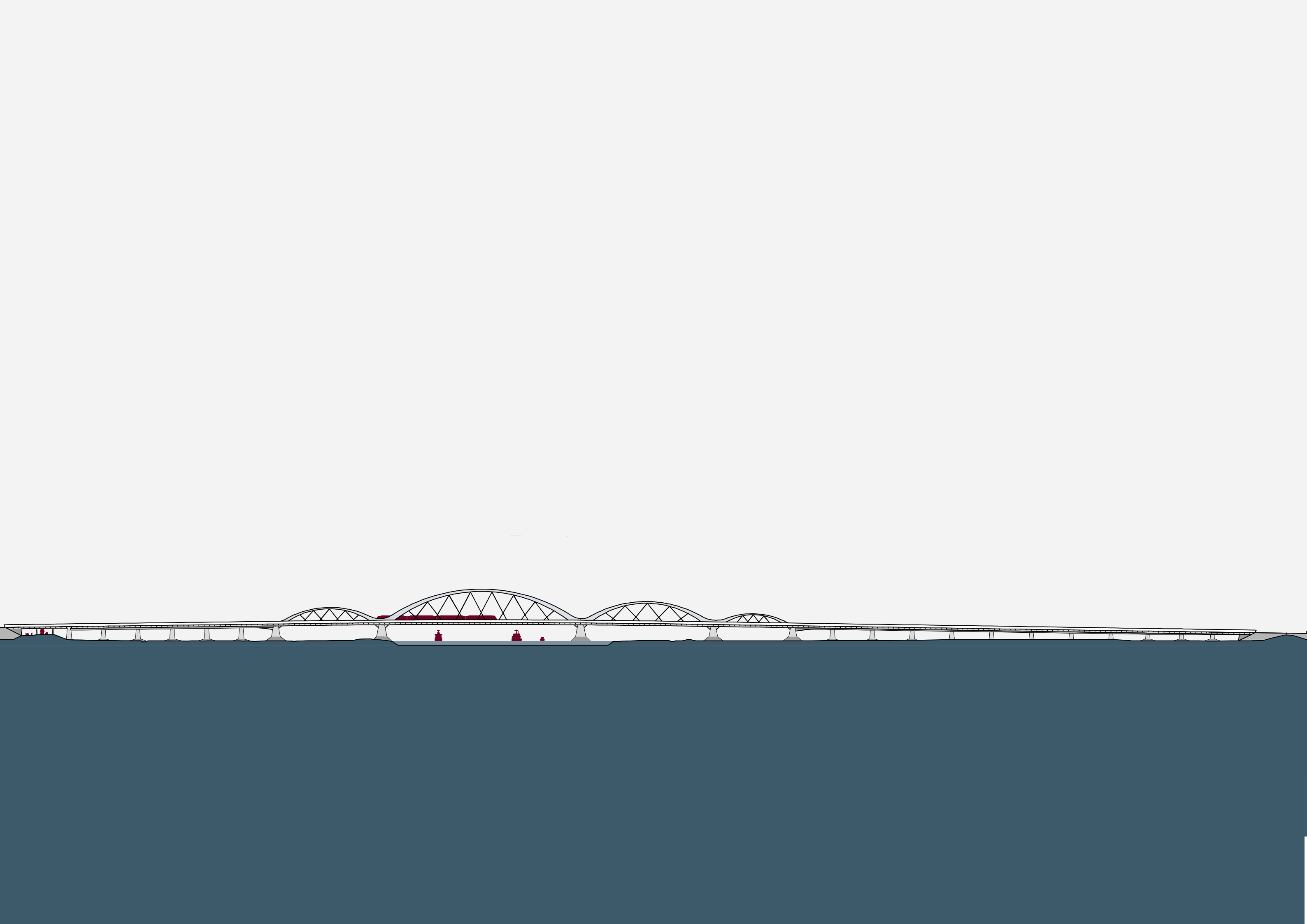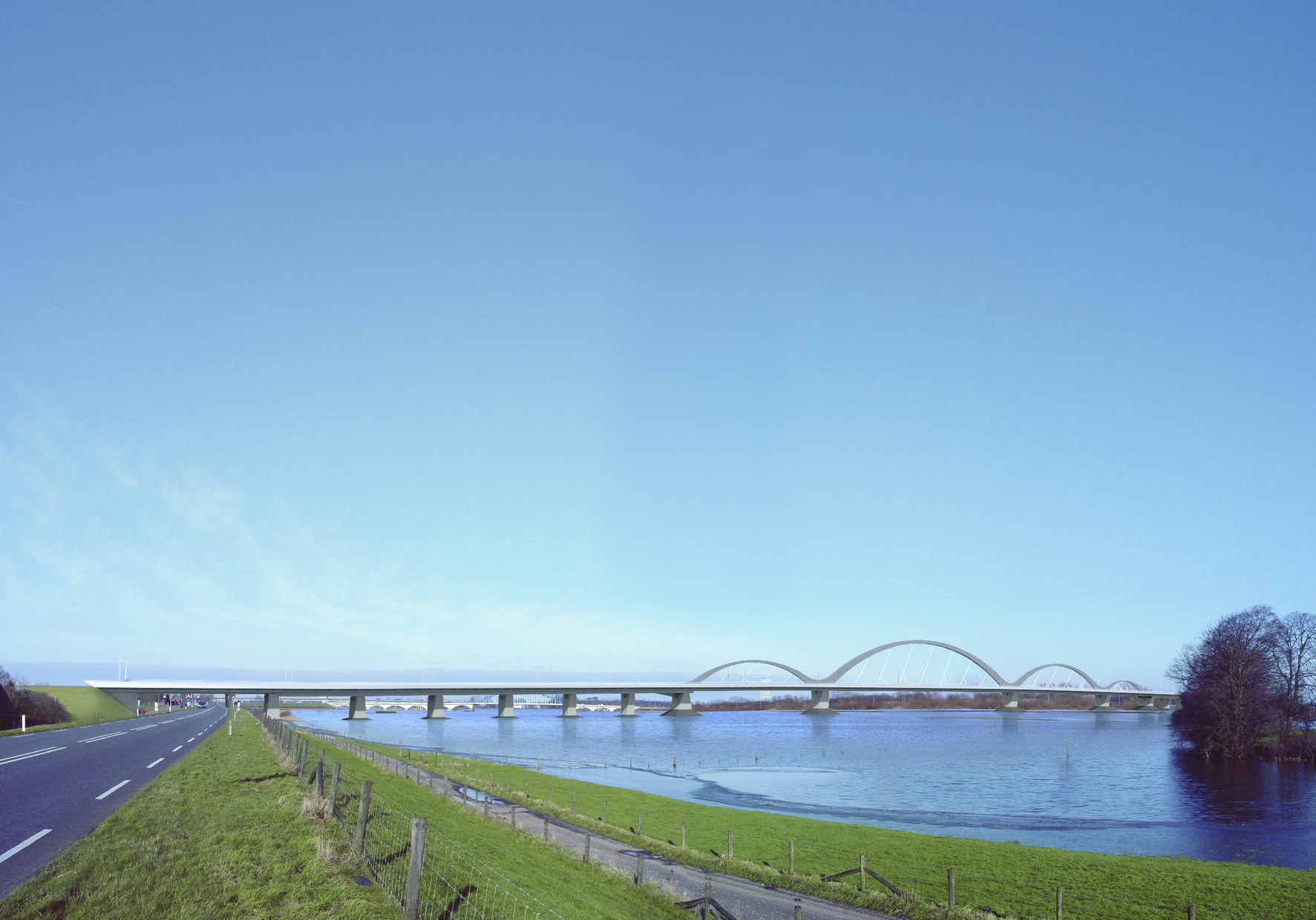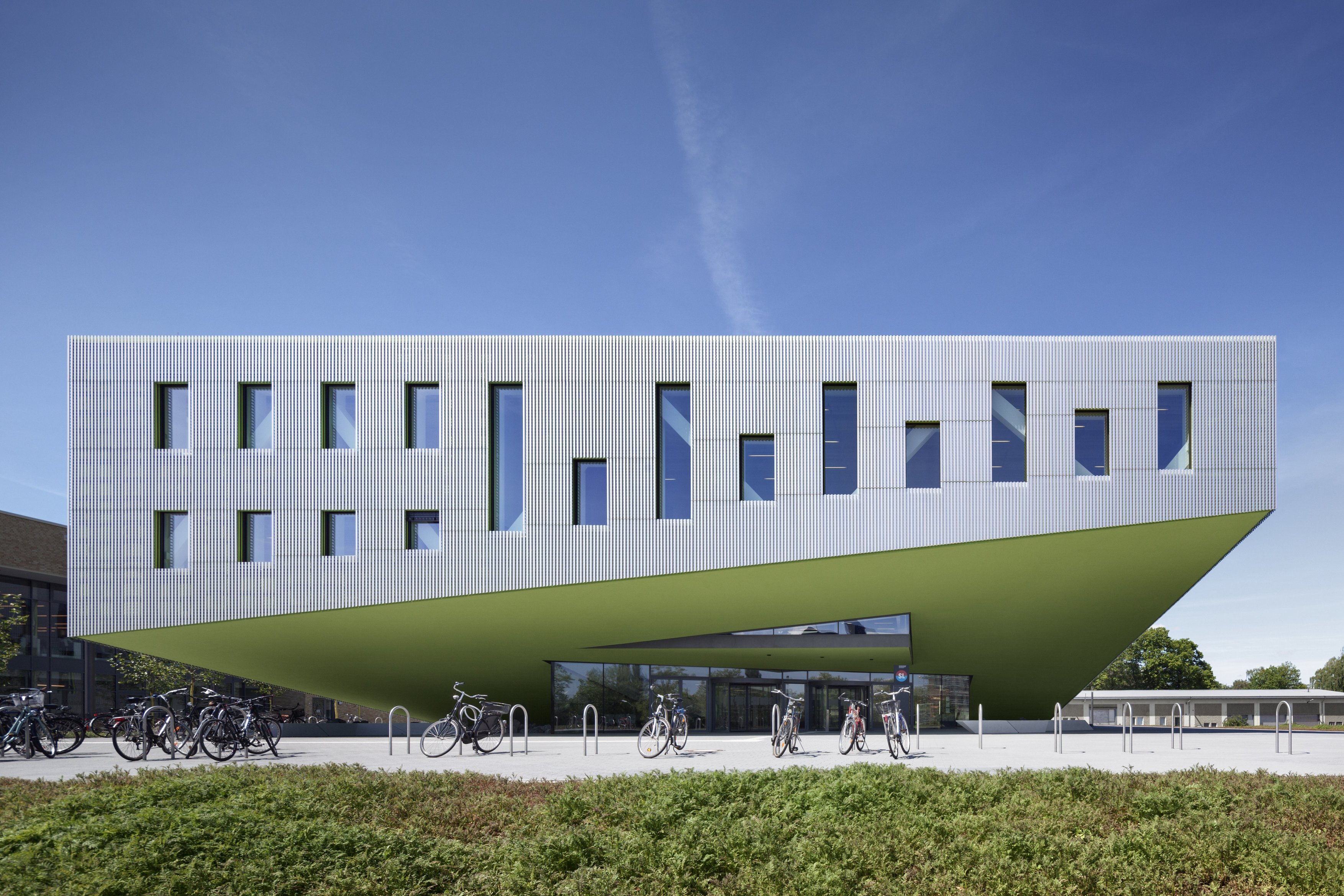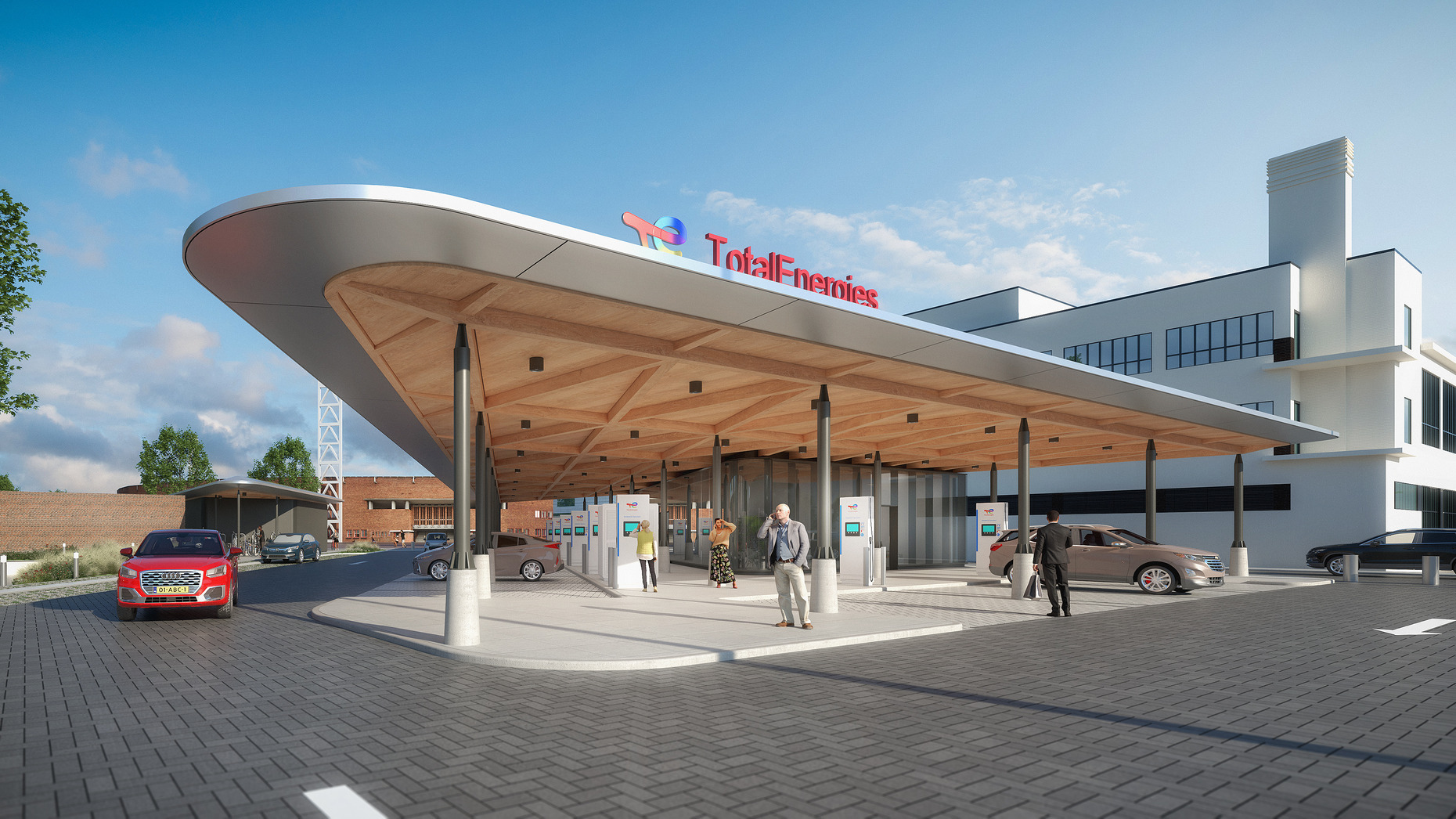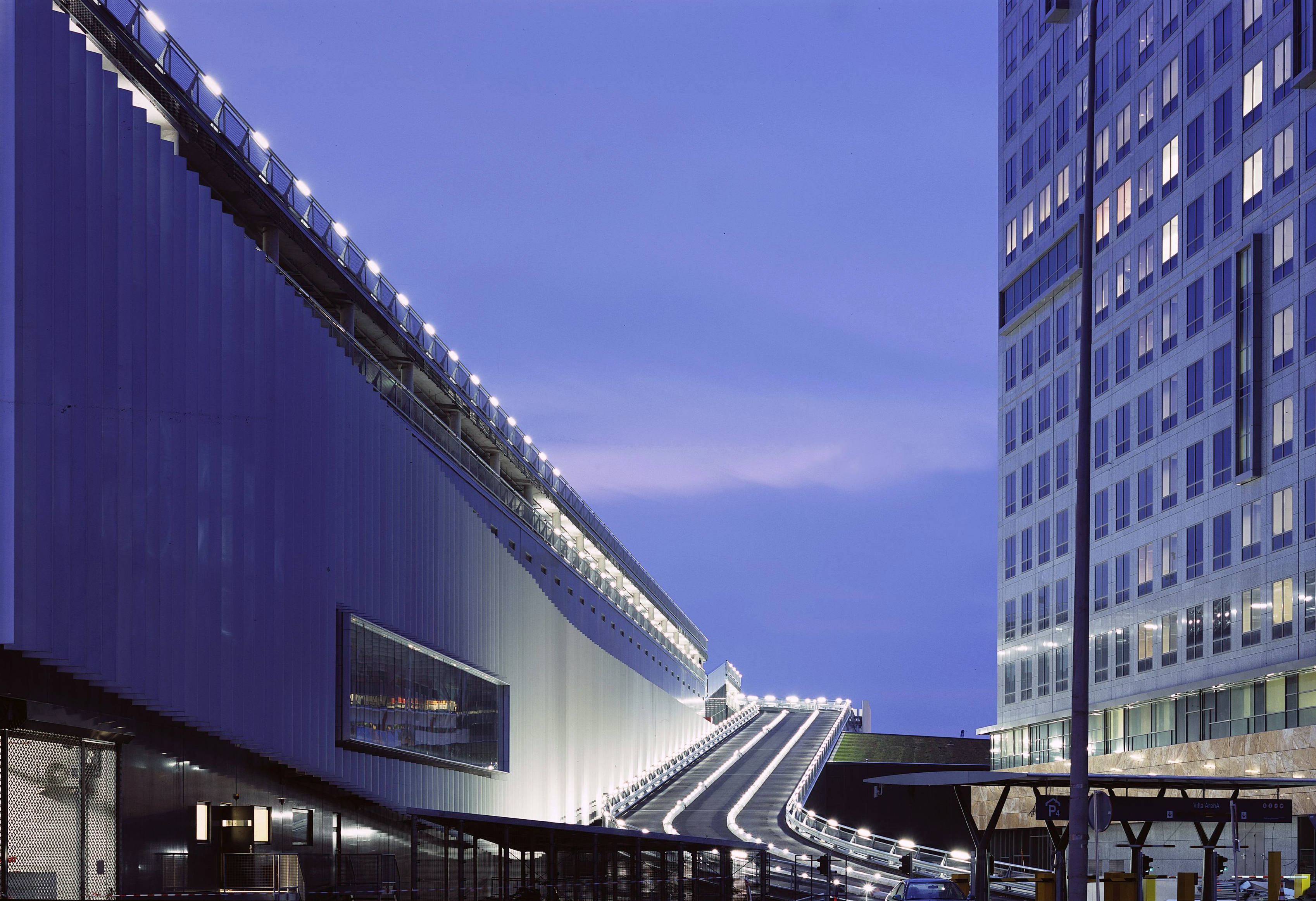Railway bridge over the Ijssel – Hattem/Zwolle
Because the IJssel flows naturally through the landscape, the river forms a winding, curving shape. The wide floodplains around it are incredibly large and beautiful. When the railways were developed, they brought impressive railway bridges—often made up of several arches—that stretched from one dike to the other and left a strong industrial mark on the area.
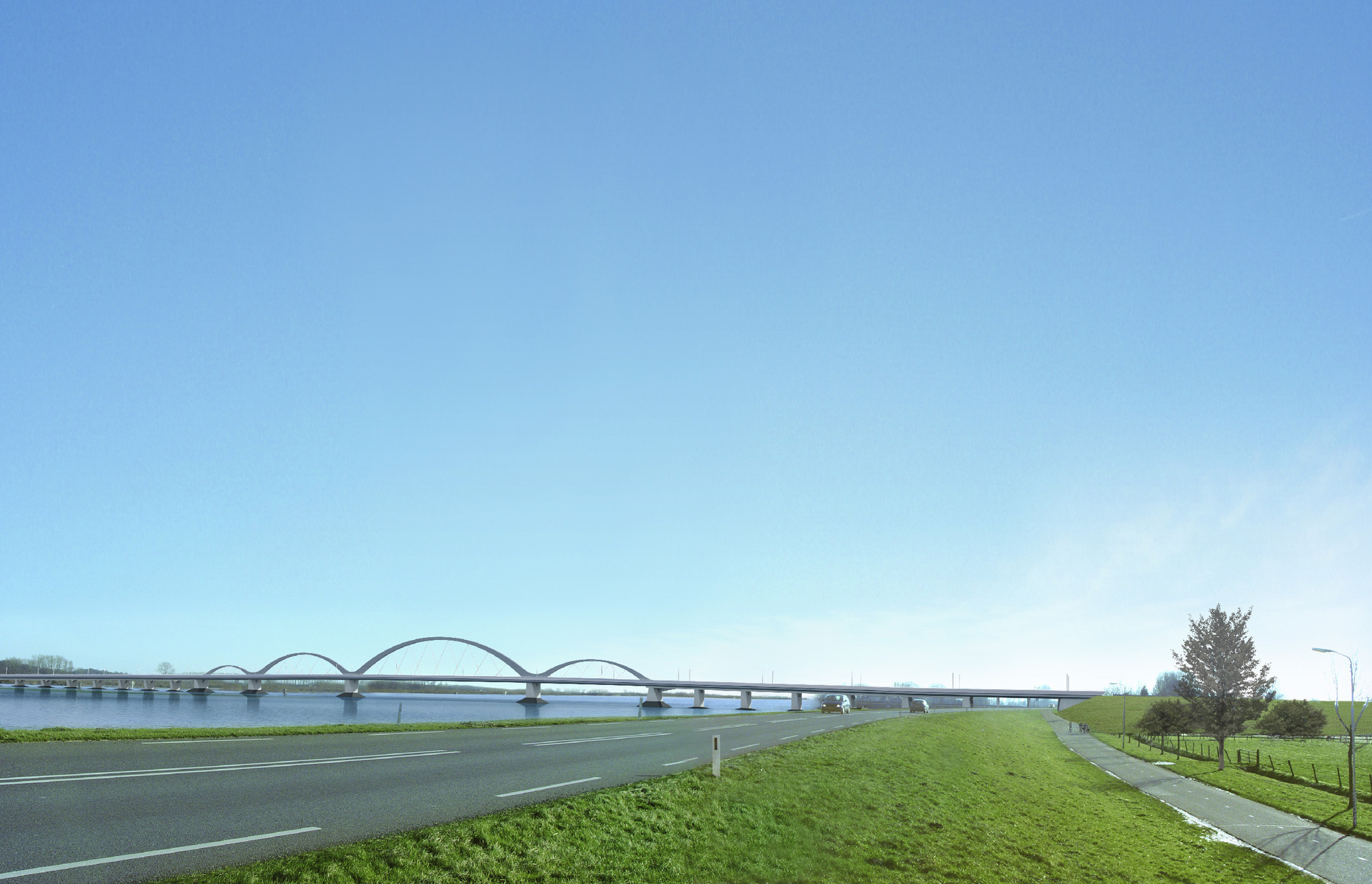
The original railway bridge between Hattem and Zwolle also had several arches. The arch shape is not only strong and efficient for building a bridge, but it also fits well with the flowing shape of the river. A single arch on its own might look a bit lost in the open landscape. But placing several arches one after another helps to highlight the wide space of the IJssel between the dikes. Because the arches have different spans, their heights vary, creating a rhythm when placed in a row. This rhythm reflects the landscape below, especially where the highest arch stands above the main waterway.
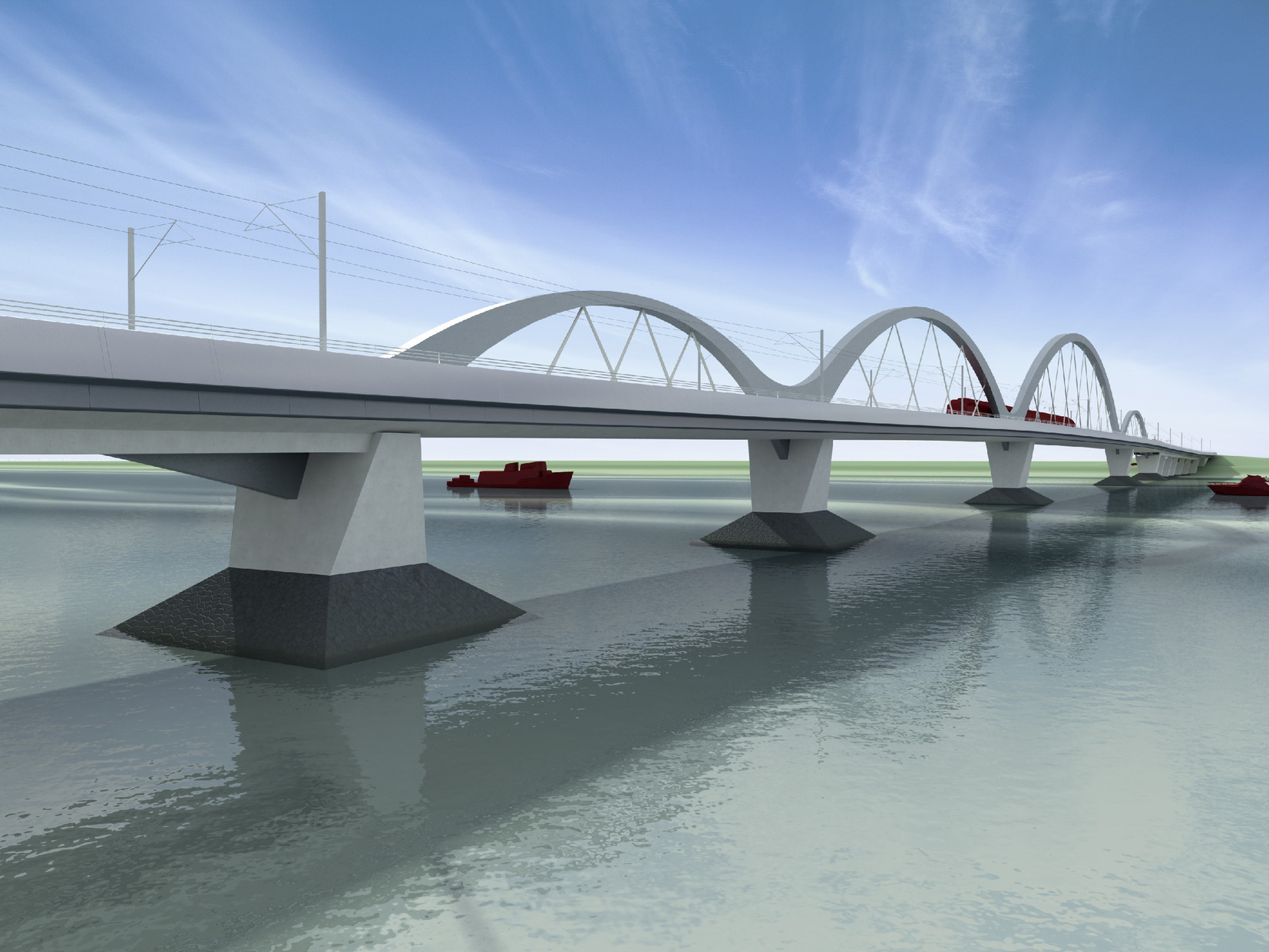
The feeling of movement in the design becomes even stronger because it uses just one simple form. This idea is continued in the new bridge, which uses what’s called a “mono-arch.” For each section of the bridge, there’s a single arch in the center, with the train tracks on either side. This simple design not only looks clean and strong, but also gives passengers a wide, open view of the landscape from the train. The bridge’s structure is modest but elegant and powerful, blending in beautifully without overpowering the natural surroundings.
